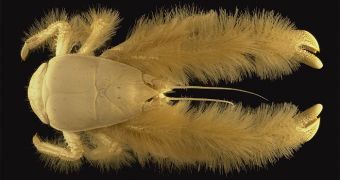For the last ten years or so, a large international group of researchers, featuring marine biologists, oceanographers and so on, has been involved in one of the largest reviews ever. The goal of the investigation is to produce new scientific data to explain things such as the diversity of marine species, their distribution throughout the world's waters, as well as why such a large abundance of life exists in the oceans. The full report is scheduled to be released this October, in London, but researchers have recently presented a sneak preview, at the annual meeting of the American Association for the Advancement of Science (AAAS), held in San Diego.
According to the BBC News, speakers for the project, called the Census of Marine Life, have revealed the discovery of about 5,000 new species of aquatic creatures, each more bizarre than the other. In addition to the interesting and colorful animals, the researchers also highlighted the fact that many organisms capable of producing beneficial substances have also been identified. The scientists presenting the CML work at the meeting also said that the wealth of data collected during this massive study would provide all the scientific foundation policymakers would ever need in developing measures to protect endangered species and ecosystems.
Some 80 countries participate in this endeavor, for a grand total of about 2,000 experts in their respective fields. All of them have been constantly working on the Census since 2000, and have made considerable progress in understanding more about the huge mystery that our oceans pose. Though studies on aquatic life have been conducted for centuries, there are still probably thousands, if not more, species that we have yet to encounter. This is clearly evidenced by various creatures washing up on shores occasionally, as well as by the animals that are brought on land by tsunamis.
One of the worst news that the researchers had to present is that nearly all coral reefs in the world showed signs of damage due to reckless human fishing practices. “All but one of the reefs I've looked at has been very badly damaged by bottom trawling – where a fishing net is dragged along the sea floor. Bottom trawling bulldozes through reef habitats that are thousands of years old. But the good news is that we now have the data to change policy and work with fishermen to say where marine protected areas should be,” says University of Plymouth marine biologist Dr Jason Hall-Spencer.

 14 DAY TRIAL //
14 DAY TRIAL //